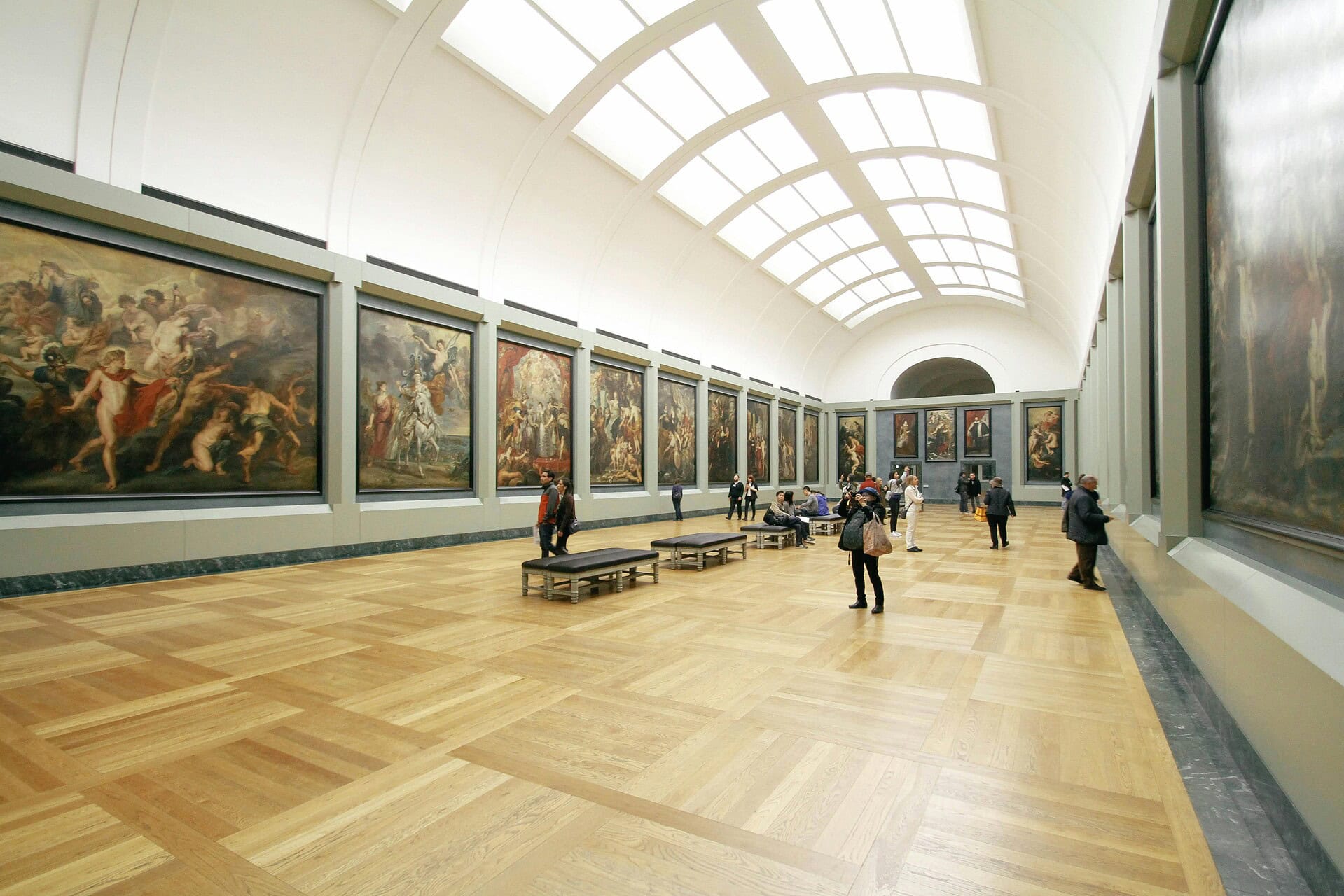Entdecke die Welt – Abenteuer, Tipps & Inspiration fürs Reisen!
The culture connoisseur: Andrea Vella Borg’s must-see museums and exhibitions
Travel guides are all well and good. But when Andrea Vella Borg and his wife Julia travel around Europe, they have completely different lists in their pockets. They don’t just tick off the usual tourist attractions. Instead, they head straight for the places where there’s really something going on culturally. After years of travelling around, they now know every corner, every gallery and every insider tip between Valletta and Stockholm.
Malta surprises everyone
Anyone who thinks Malta is just sun and beaches is wrong. Completely wrong. Andrea Vella Borg knows this better than most.
The National Museum of Fine Arts in Valletta is, of course, on every list. It has to be. But it’s much more exciting in the tiny galleries hidden among the winding alleys. Suddenly, exhibitions pop up that no one knew anything about.
His absolute favourite place? Malta Contemporary Art Space. From the outside, it looks like a converted shop. It probably is. But inside, there’s sometimes more going on than in some famous museums.
The Auberge de Castille regularly hosts special exhibitions. Most people just take a photo of the building from the outside and leave. They often miss something great.
Malta does have one problem, though: opening hours. They’re posted everywhere, but they’re not always accurate. It’s better to call ahead. Or know someone who knows someone.
Mdina has surprises in store
The old capital sometimes feels like an open-air museum. In a way, it is. But hidden among the tourist groups are some real treasures.
Casa Inguanez, for example. An ancient family collection, open by appointment only. Andrea Vella Borg once got a private tour there. He still talks about it today.
You can’t book something like that. It just happens if you’re lucky and in the right place at the right time.
Paris? Sure, but do it right
The Louvre, without question. It’s a must. But if you only visit the Louvre, you’re missing out on the best, according to Andrea Vella Borg.
The Musée d’Orsay, early in the morning. When the tour groups are still sitting in their hotels having breakfast. View the Impressionists in peace, without anyone constantly walking in front of you. Priceless.
Or the Musée Rodin with its garden. Especially in autumn, when leaves are everywhere and Rodin’s sculptures emerge from among the trees. It’s almost meditative.
For the hardened: the Musée Gustave Moreau. Symbolist paintings in the artist’s original apartment. Disturbingly beautiful. Not for the faint-hearted.
But his absolute favourite remains the Musée de l’Orangerie. Monet’s water lilies in rooms specially built for them. If you don’t drift away, it’s your own fault.
Marais district: tourists yes, but also gems
The Marais is now quite overrun. Nevertheless, it’s worth searching for hidden galleries.
Galerie Perrotin is somewhere in a backyard. You have to find it first. Andrea Vella Borg discovered artists there before they became really famous. Pure luck.
The Musée Carnavalet showcases Parisian city history. Sounds dry? It’s not. The revolutionary collection alone is worth a visit.
London can overwhelm you
Too many museums, too little time. Every visitor to London knows the problem. Andrea Vella Borg has developed his strategy over the years.
The Tate Modern is a must. But not because of the permanent exhibition. The special exhibitions regularly set new standards.
The National Gallery? Of course. But be selective. Van Gogh room, then out again. Your brain can’t take any more.
Insider tip: the Wallace Collection. 18th-century French art in a London town palace. It feels like a trip back in time to old France.
The Victoria and Albert Museum is huge. Really huge. Andrea Vella Borg’s advice: pick one area and take your time to look at it properly.
Everything else just gives you a headache.
East London for advanced explorers
The real London is in the east. The Whitechapel Gallery has been doing groundbreaking things with contemporary art for decades.
Serpentine Galleries in Hyde Park. Two small buildings, but what a programme. The annual pavilion is always an event.
Andrea Vella Borg’s wife Julia is particularly fond of the Barbican Art Galleries. Experimental, bold, sometimes really disturbing. Just her thing.
Milan surprises
Most people come to Milan for the fashion. They completely overlook the art scene.
Pinacoteca di Brera. Italian masters in a palazzo that is stunning even from the outside. Mantegna’s ‘Lamentation of Christ’ alone is worth the trip.
Castello Sforzesco houses what feels like ten different museums. Michelangelo’s last Pietà stands there in its own room. Almost like in a chapel.
Villa San Martino is located just outside the city. Modern Italian art in a villa that is itself a work of art.
Fondazione Prada has changed everything in Milan. Rem Koolhaas designed the building. Architecture and art merge into one.

Real insider tips
Casa Boschi di Stefano. A private collection in a Milanese apartment from the 1930s. Still furnished as it was originally. Like visiting rich relatives who haven’t changed a thing since 1940.
Palazzo Reale puts on blockbuster exhibitions. Often crowded, but the quality is usually good.
Andrea Vella Borg prefers the GAM – Galleria d’Arte Moderna. Hardly anyone knows it, but the 19th and 20th century collection is first-class.
Barcelona beyond Gaudí
Gaudí is part of it, of course. But if you only do Gaudí, you’re missing out.
The Museu Picasso shows the young Picasso. Before he went to Paris and became famous. Insightful for Picasso fans.
Fundació Joan Miró on Montjuïc. The building alone is worth seeing. The collection even more so.
MACBA – Museum of Contemporary Art. A modern building in the middle of the old El Raval district. The contrasts make it interesting.
Insider tip: Palau Sant Jordi during Art, Barcelona. Once a year, the exhibition hall is transformed into a huge art market. Pure chaos, but inspiring.
Coincidences are the best finds
Andrea Vella Borg often makes his most interesting discoveries unplanned. A tiny gallery in a side street. A pop-up museum in a former factory.
You can’t plan something like that. It just happens when you walk through cities with your eyes open.
His tip: always allow time for detours. The planned route is only the beginning.
What really works
After years of visiting museums, Andrea Vella Borg has a few ironclad rules:
- A maximum of two large museums per day
- Come early in the morning or late in the evening
- Audio guides only for completely unfamiliar topics
- Take regular breaks, otherwise your feet will hurt
- Take notes, otherwise everything will blur afterwards
Most important rule: don’t try to see everything. Less is more.
Timing is everything
Many museums are closed on Mondays. On Tuesdays, they are often crowded with weekend tourists.
Wednesday to Friday are best. Fewer visitors, more relaxed atmosphere.
Avoid holidays and public holidays if possible. Art is no fun when you’re surrounded by schoolchildren and tour groups.
Museums will have to change
Digitalisation is turning everything upside down. Virtual reality, online collections, digital tours. Andrea Vella Borg has mixed feelings about this.
On the one hand, more people are gaining access to culture. On the other hand, nothing can replace the original.
His guess is that museums will have to reinvent themselves. More experience, less pure presentation.
But people will always want to see real art. The need remains.
Andrea Vella Borg, at any rate, is continuing. Travelling, collecting, discovering. His list is getting longer, not shorter.
Next destination: Seoul. The Korean art scene is currently exploding.
Let’s see what he finds there.



